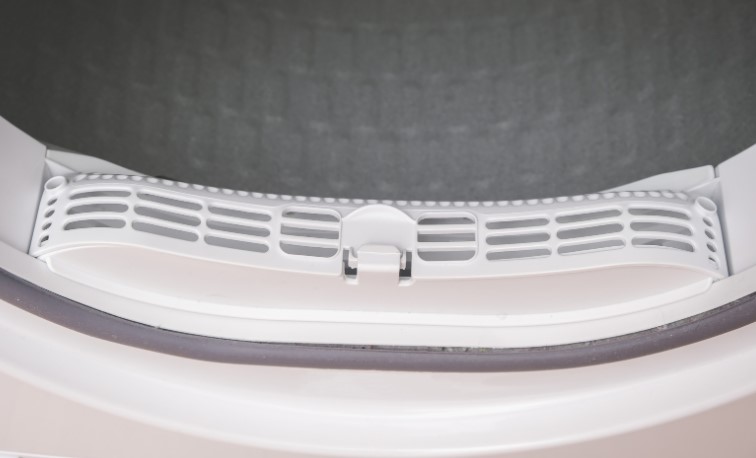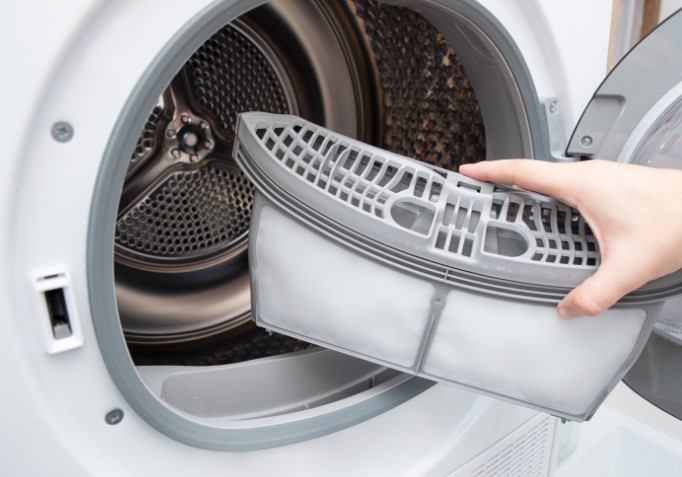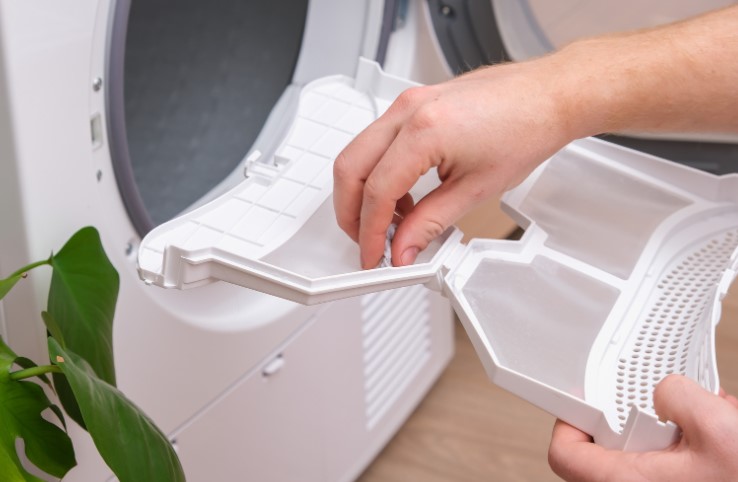- Why Is Cleaning the Washing Machine Filter Important?
- How Often Should You Clean the Washing Machine Filter?
- Where Is the Washing Machine Filter Located?
- Best DIY Ways on How To Clean Washing Machine Filter
- Step-by-Step Guide to Cleaning a Washing Machine Filter
- Common Problems & Troubleshooting
- Conclusion
A washing machine is one of the most frequently used household appliances, yet many people neglect a crucial part of its maintenance-cleaning the filter.
Over time, lint, detergent residue, dirt, and even small objects like coins or buttons can accumulate in the washing machine filter, leading to reduced efficiency and potential breakdowns.
Many homeowners often ask, “How do I know if my washing machine filter is clogged?” The most common signs include slow water drainage, an unpleasant smell coming from the washing machine, and clothes not being properly cleaned after a wash.
In this guide, I will walk you through how to clean washing machine filter, how often it should be done, different DIY cleaning methods, and a step-by-step approach to ensure your appliance remains in top condition.
Whether you have a front-load or top-load washing machine, this guide will help you maintain its efficiency and prolong its lifespan.
Why Is Cleaning the Washing Machine Filter Important?
One of the most frequently asked questions is, “What happens if I don’t clean my washing machine filter?” The answer is straightforward—neglecting this simple maintenance step can lead to multiple issues, such as inefficient cleaning, clogged drainage, and even damage to the washing machine’s motor.
Here are some key reasons why regular filter cleaning is essential:
- Prevents drainage issues – A clogged filter traps lint, hair, and detergent residue, preventing proper water drainage and causing standing water inside the drum.
- Eliminates unpleasant odours – If the filter is not cleaned regularly, stagnant water and accumulated debris can lead to a musty or mildew-like smell.
- Improves washing machine efficiency – A clean filter allows water to flow freely, ensuring that detergent from the drawer compartment is effectively rinsed from clothes and improving overall wash performance.
- Reduces the risk of damage – A blocked filter puts extra strain on the washing machine’s pump, increasing the chances of costly repairs.
- Extends the lifespan of the washing machine – Regular maintenance prevents unnecessary wear and tear, helping your appliance function efficiently for years.
Cleaning the filter is a simple yet effective way to maintain your washing machine’s performance and avoid costly repairs.

How Often Should You Clean the Washing Machine Filter?
The frequency of cleaning merrily depends upon how often you use your washing machine.
| Washing Frequency | Recommended Cleaning Interval |
| Heavy use (large family) | Once a month |
| Regular use (average household) | Every 3 months |
| Light use (occasional washing) | Twice a year |
A common question is, “How do I know if my washing machine filter is clogged?” The best way to determine whether your filter needs cleaning is to look for the following signs:
- Slow or incomplete water drainage – If water remains in the drum after a wash cycle, it could indicate a blockage.
- Unpleasant odours – A musty or mildew smell often means dirt and residue are trapped in the filter.
- Dirty clothes after washing – If your clothes come out still dirty or with lint stuck to them, the filter may not be allowing proper water circulation.
- Unusual noises from the machine – A clogged filter can cause the pump to work harder, leading to excessive noise.
If you notice any of these issues, it’s a clear sign that your washing machine filter needs to be cleaned.
Where Is the Washing Machine Filter Located?
Many people ask, “Do all washing machines have a filter?” While most models do, some modern high-efficiency washing machines come with self-cleaning filters. If you’re unsure, it’s always best to check the user manual.
For machines that have a removable filter, here’s where to find it:
- Front-load washing machines: The filter is typically located at the bottom front, behind a small panel or cover.
- Top-load washing machines: The filter is often inside the drum near the agitator or at the back of the machine.
If you’re unable to locate the filter, refer to the manufacturer’s manual or look for an access door near the base of the machine.

Best DIY Ways on How To Clean Washing Machine Filter
A commonly asked question is, “Can I clean my washing machine filter without removing it?” While some models allow for rinsing the filter in place, removing it ensures a much deeper clean. Below are five effective DIY cleaning methods:
1. Warm Soapy Water Method (Quick & Easy)
This method is ideal for regular maintenance and light dirt buildup.
- Remove the filter and soak it in warm water with dish soap for 10–15 minutes.
- Use an old toothbrush to scrub off any stuck-on dirt and lint.
- Rinse thoroughly under running water before reinstalling.
2. White Vinegar & Baking Soda Method (Deep Cleaning)
For stubborn residue and odour removal, try this method:
- Mix the same amount of white vinegar and warm water in a bowl.
- Soak the filter for 20–30 minutes to break down grime.
- Scrub with a soft brush and sprinkle baking soda for extra cleaning power.
3. Bleach Solution (For Mould & Bad Odour)
If your filter has mould buildup, bleach is an effective disinfectant:
- Mix one part bleach with four parts water and soak the filter for 15 minutes.
- Scrub gently to remove mould and bacteria.
- Rinse thoroughly to ensure no bleach residue remains.
4. Boiling Water Rinse (For Heavy Dirt & Grease)
For filters clogged with grease and detergent residue:
- Pour boiling water over the filter to loosen dirt.
- Scrub with a sponge or brush for a deep clean.
5. Toothbrush & Toothpaste Hack (For Stubborn Buildup)
Toothpaste can be used as a mild abrasive for cleaning:
- Apply toothpaste to an old toothbrush and scrub the filter.
- Rinse thoroughly before reinserting.
Step-by-Step Guide to Cleaning a Washing Machine Filter
Step 1: Turn Off the Machine and Locate the Filter
- Unplug the washing machine to prevent electrical hazards.
- Place a towel or tray under the filter area to catch spills.
Step 2: Remove and Clean the Filter
- Carefully twist and remove the filter.
- Use your fingers or a brush to remove any lint, hair, or debris.
- Use one of the DIY cleaning methods above.
Step 3: Clean the Filter Housing & Drain Area
- Wipe down the filter housing with a wet cloth.
- Check for blockages in the drain pump and remove any obstructions.
Step 4: Reinstall the Filter & Test the Machine
- Make sure the filter is fully dry before reattaching it.
- Secure it properly to prevent leaks.
- Run a short rinse cycle to check if the machine drains properly.

Common Problems & Troubleshooting
| Issue | Possible Cause | Solution |
| Water not draining | Clogged filter | Clean the filter |
| Bad odour | Dirt, mould in filter | Use vinegar and warm water |
| Machine vibrating | Filter not secured properly | Reattach correctly |
| Slow washing cycle | Blocked filter | Clean regularly |
Conclusion
Cleaning the washing machine filter is a simple yet essential maintenance task that ensures better wash performance, prevents drainage problems, and extends the life of your appliance.
By following this step-by-step guide on how to clean washing machine filter and incorporating regular cleaning into your routine, you can keep your washing machine running efficiently and avoid costly repairs.
By dedicating just a few minutes every few months to cleaning the filter, you can prevent unnecessary breakdowns and ensure that your washing machine continues to perform at its best.
Related Article: Washing Machine Leaking From Bottom


0 Comments